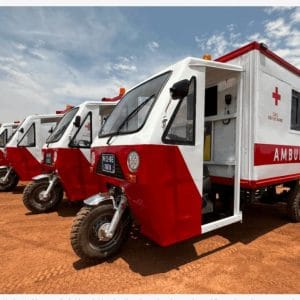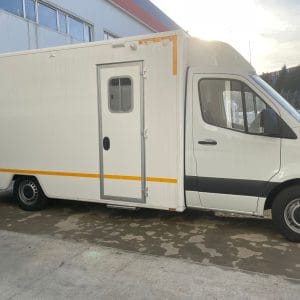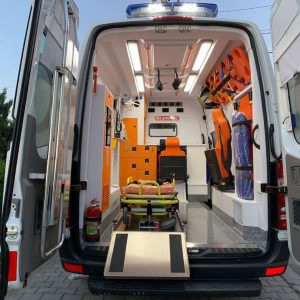Mechanical Mine Clearing Vehicle; The persistent global threat of landmines and unexploded ordnance (UXO) necessitates a multi-faceted approach to clearance. While manual demining is precise, it is dangerously slow and labor-intensive. Enter the Mechanical Mine Clearing Vehicle—a formidable piece of military and humanitarian engineering designed to neutralize large-scale landmine threats rapidly, efficiently, and, most importantly, without endangering human lives. These machines are the backbone of area reduction, creating safe paths for personnel, civilians, and follow-on forces.
What is a Mechanical Mine Clearing Vehicle?
A Mechanical Mine Clearing Vehicle (MMCV) is a specially designed, heavily armored vehicle, often based on a main battle tank or heavy tracked chassis, equipped with a front-mounted mechanism to detect, trigger, or destroy landmines. Its primary purpose is to breach through minefields, clearing a safe lane for troops, humanitarian convoys, or civilian repopulation. It is a key component of a broader demining strategy that may include manual teams and explosive-sniffing dogs for final verification.
Core Mechanisms: How They Clear a Path
These vehicles employ several distinct mechanical principles to defeat mines. Many modern systems can be interchangeable on a single vehicle platform.
1. Flail Systems: The Classic Thrasher
- How it works: A large, rotating drum is mounted on booms in front of the vehicle. Attached to this drum are heavy chains or flails tipped with hardened steel balls or hammers. As the drum rotates at high speed, the flails thrash the ground surface with tremendous force.
- Effect: The impact detonates anti-tank (AT) and anti-personnel (AP) mines through direct pressure or sympathetic detonation. It also shreds vegetation, removes tripwires, and pulverizes the soil to a predetermined depth, making the area impassable for subsequent mine laying.
- Example: The British Python Minefield Breaching System or the older but iconic Aardvark JSFU.
2. Mine Plows: The Bulldozer Approach
- How it works: A set of heavy, sharpened tines or plowshares is pushed through the ground in front of the vehicle. The plow’s design lifts mines and unexploded ordnance from the soil, pushing them to the side of the vehicle’s path into clearly marked, parallel furrows.
- Effect: Unlike a flail that destroys mines in place, a plow displaces them. This clears a safe lane for the vehicle and those following it, but the mines on the side remain live and must be dealt with later. Plows are often paired with marking systems to delineate the cleared lane.
- Example: The Full Width Mine Plow used on the US M1 Abrams tank.
3. Roller Systems: The Pressure Trigger
- How it works: One or more sets of massive, heavy steel or composite wheels are pushed in front of the vehicle. These rollers exert ground pressure far exceeding the trigger threshold of most anti-tank mines.
- Effect: As the vehicle advances, the rollers detonate mines through direct pressure, absorbing the blast and protecting the host vehicle. They are particularly effective against blast mines but may not defeat more sophisticated tilt-rod or magnetic fuzed mines.
- Example: The Python Minefield Breaching System often uses rollers in conjunction with its line charges.
4. Combined Arms: The Modern Standard
The most effective modern MMCVs often integrate multiple systems:
- A primary mechanism (eplow or flail) to clear the majority of the threat.
- A magnetic signature duplicator to prematurely detonate mines with magnetic influence fuzes.
- Lane marking systems to automatically delineate the safe path.
- Remote control capability allowing the operator to control the vehicle from a safe distance, a critical feature for dealing with complex threats.
Key Design Features and Components
- Heavily Armored Chassis: Based on tanks (e.g., Leopard, M60, T-72) or custom-built heavy-tracked vehicles to withstand multiple blast incidents and fragmentation.
- Blast Protection: The hull is designed with V-shaped underbellies to deflect blast waves away from the crew compartment. The engine and vital components are also armored.
- Remote Control Operation (RCO): A vital feature for maximum crew safety. Operators can control the vehicle from several hundred meters away using a portable control unit, safe from blasts and ambush.
- Modularity: Many modern systems are designed as modular kits that can be fitted onto standard main battle tanks, transforming them into breaching vehicles within hours.
- Navigation and Marking Systems: Integrated GPS and automatic lane marking systems (deploying paint, stakes, or flags) ensure the cleared path is accurately recorded and followed.
Advantages and Limitations
Advantages:
- Speed: Can clear a path hundreds of meters long in a fraction of the time it would take a manual team.
- Safety: Removes personnel from the immediate danger zone, especially when operated via remote control.
- Effectiveness: Highly effective against a wide array of conventional pressure-activated mines and UXO.
- Area Reduction: Rapidly reduces the suspected area, allowing manual deminers to focus on confirmation and more complex tasks.
Limitations:
- Not 100% Effective: No mechanical system guarantees 100% clearance. Complex terrain, low-metal mines, and advanced fuzes can sometimes survive.
- Terrain Dependent: Steep slopes, very rocky ground, deep mud, or dense urban rubble can severely limit their effectiveness.
- Logistical Footprint: They are large, heavy, expensive, and require significant training and maintenance support.
- Environmental Impact: Flail systems, in particular, can cause significant soil disturbance and ecological damage.
Notable Examples in Service
- Armored Caterpillar D9R (Israeli IDF): Equipped with a mine plow and “Routemark” lane marking system, used for both counter-terrorism and humanitarian operations.
- Husky Mounted Detection System (HMDS): A 2-vehicle system where the lead vehicle (Husky) detects mines using a blast-resistant chassis and a metal detection arm, marking their location for a following vehicle to neutralize.
- Keiler Mine Clearing Tank (German Army): Based on the M48 Patton chassis, it uses a high-performance flail system and is one of the most advanced dedicated systems in the world.
- Hydrema 910 MCV: A smaller, versatile, purpose-built wheeled vehicle popular with humanitarian NGOs for its agility and dual-use capability as a dump truck.
Conclusion: An Indispensable Tool for a Safer World
The Mechanical Mine Clearing Vehicle is a powerful testament to applied engineering in the service of human safety. While not a silver bullet, it is an irreplaceable force multiplier. By assuming the immense risk of mine detonation, these mechanical behemoths save countless lives, accelerate the return of land to productive use, and provide a crucial shield for those working on the front lines of both conflict and peace. Their continued evolution, integrating greater automation, improved detection, and enhanced adaptability, ensures they will remain a cornerstone of global humanitarian demining and military breaching operations for decades to come.





































